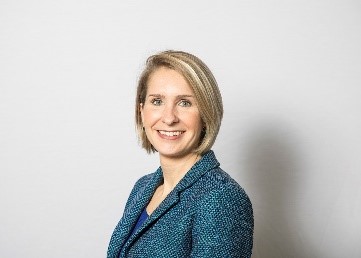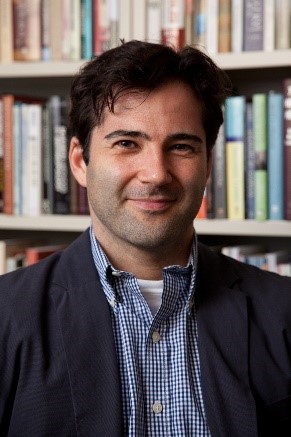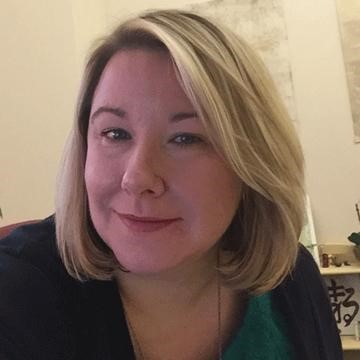Editor’s note: This issue’s Conversation features an interview by Diane Zipoli, MSW, with Leah K. Lazzaro, DSW, and Ralph G. Cuseglio, DSW, about the partnership between their school and their local library. Leah K. Lazzaro is the assistant dean of the School of Social Work at Monmouth University, and from 2015 to 2020 was the school’s director of field and professional education. Ralph G. Cuseglio is an assistant professor at Monmouth University. Diane Zipoli is an assistant director for field education at Simmons University.
Diane Zipoli: Thank you for taking the time to have a conversation with Field Educator about the partnership between the Long Branch, New Jersey, public library and Monmouth University. The topic of library-based internships has been hot on the Council of Social Work Education’s field director list serve, so we anticipate a lot of interest from our readers. Could you start by sharing how the partnership between Monmouth University’s Field Education Department and Long Beach, New Jersey’s library came about, and who initiated it?
Leah K. Lazzaro: In the summer of 2015, I was the assistant director of field; our dean, Dr. Mama, received an email from the library director, Tonya Garcia, which she forwarded to me. The library is located very near the school; we’re in neighboring towns. I met with the director to learn about her interests and needs. It seems to be a recurring issue that libraries are seeing many unmet needs with their patrons. The director wanted to initiate a partnership and develop a social work internship site at the library. At that first meeting, I was educating her about social work education and internships, and what it would entail to have a social work student placed at the library.
The missing piece of the puzzle was the availability of a social work supervisor. Ultimately, the director was able to identify a semiretired social worker who already volunteered at the library and who was able to supervise a social work student as part of her volunteer work. That’s how it all started! We first met in June, and by August the library had an MSW intern who was a perfect fit, as though some kind of Kismet was involved: the right student appeared who was local to the community, a mature career changer, and who was able to step into a big role and was also able to help shape the role to make it into what it has grown into now.
DZ: Dr. Cuseglio, you come at it from a different angle. How it is that you came to learn about the partnership and ultimately to write about it?
Ralph G. Cuseglio: I came onboard at Monmouth in 2016, right after this partnership had started. I was teaching a field practicum class here at Monmouth, and the instructor for that class also serves as the field liaison, so you actually go to the placements to meet with the supervisors and the students. It’s a weekly class in which you’re processing what’s going on in field. And so, to be perfectly honest, I stumbled into the area of library social work through my work with students in this class.
My background is in micro and clinical social work. In one of the first classes, when we were going around the room and I was asking students to tell me where they were placed, a student stated that they were placed at the Long Branch Public Library. I paused and didn’t really know what to think, because I had never heard of a placement like this before. Over the year, as I worked more with the student (reading field journals, conducting site visits), I learned more about social work in libraries. I also learned that there wasn’t much literature about social workers in libraries, never mind social work interns working in a library. With my article (Cuseglio, 2021) I wanted to document our experience for other schools. I thought that it was a unique partnership that could improve services to communities and library patrons.
DZ: Thank you. Dr. Lazzaro, did you know that this was unique at the time you were approached?
LL: It felt very unique; we hadn’t ever had a student placed in a library before. I remember the library director saying to me that we should research and write about the partnership and then present our work to the State Library Association; she wanted others to know about the model we were building. Also, she has worked to connect Monmouth to other libraries; she has really been a champion for the idea of partnerships between libraries and social work. A student captured why it is such a good match when they said to me that a library is for the people, it’s for everyone; there’s no stigma attached to coming to a library, but that also means that there are a lot of challenges with what people are asking and looking for.
RC: To add to that, there are approximately 9000 public libraries in the United States and only about 35 have social workers; about 90 schools of social work have placed interns in libraries (as of 2019), so relatively speaking there’s very little social work presence in libraries.
DZ: Dr. Cuseglio, in your article you identified an overlap between library and social work values and professional missions. What did you learn in your research about the overlap?
RC: Initially, there wasn’t a lot I knew about the library profession. One thing I learned right off the bat, from my research and from the American Library Association’s core value statement, is the profession’s commitment to providing a public good or service. Librarians also value social responsibility; they aim to address or ameliorate societal problems. Libraries have a democratizing function. They are accessible to anybody; they are one of the only places a person can go in any community, and walk right in, no matter who they are. Confidentiality and privacy, protecting all users’ information, are also core values for librarians. So, you can see the overlap with our social work code of ethics: social and cultural diversity, the dignity and worth of people, access and equality, the commitment to service, the importance of human relationships and social justice. I wasn’t expecting the extent of the overlap.
DZ: A tremendous number of shared values and commitments! So, let’s shift gears to talk about the challenges and the successes, and maybe any surprises along the way in this partnership.
LL: The main challenges were supervision and space. Specifically, our social work student didn’t have an office; he would use a conference room or a computer lab rather than a private dedicated space. We learned that you really need to have good communication between the social work supervisor and the library director, so that the student’s needs can be addressed and so the student knows who to reach out for support when the supervisor isn’t onsite, and who they can go to directly when they need it. Anyone can come into a library, and a lot can happen unexpectedly.
The huge success for us is that our intern was the first social worker in New Jersey to work in that role in a library. We’re proud of that. We also have a good relationship with the library that has continued to grow beyond Monmouth University and beyond the Long Branch library, so that’s definitely a highlight.
DZ: Could you say more about the challenges related to the supervision?
RC: From my experience doing site visits, reading student journals, and class discussions, as well as my research on social work in libraries, the biggest challenge for this type of placement is the supervision. It’s best when there is a social worker onsite, but that’s not common, and of course it requires funding. Having an offsite supervisor can be a challenge, especially if the supervisor is not familiar with library social work and the needs of different patrons, whether it’s the need to be a connected to social services, benefits, or entitlements, or even needing food or shelter. Supervision is a big piece. I think the culture of the library matters as well.
DZ: Say more about that.
RC: A lot depends on who the library director is and how they view the patrons, and the library’s connection to the community. Also, the director needs to see the value of having a social work intern and of a social work presence in general. In addition, there needs to be an orientation process for the staff to learn what services the intern will provide. The intern also needs to learn the role and the functions of different library staff. In our experience, there was a bit of initial confusion about the social work role; it was a little murky in the beginning. The director knew, there were certain key library staff who knew, the task supervisor knew, but then other staff weren’t always so sure.
As Leah mentioned, trying to find a dedicated space for the social worker is also important and, as we know, for the patrons to know they can have a place to talk that is private and not in the open. Also, the selection of a student is important. Like Leah said, there was some sort of Kismet involved there—the student was already a member of the community; he was a nontraditional student and a little bit older. He was also a go-getter, so you knew he could be very independent. And he’s really personable. He came from a macro background. Most important was his ability to engage patrons, to listen to their stories and what they were struggling with. Counseling skills can really come into play when being able to respond to a patron who is upset or in crisis. This is something to consider when thinking about patron issues that interns can face.
In so many ways a library is a perfect place to have a social work intern; patrons spend a large amount of time there, tend to have high needs, and are often marginalized or vulnerable. Many library–social work partnerships started out as a way to respond to homeless people who were spending large amounts of time in the library because it was a safe place to stay and they had access to computers and information, which is huge for marginalized populations.
DZ: Librarians don’t necessarily expect to interface with so much need. Is there anything else you’d like to share with Field Educator readers about your experience with partnerships between schools of social work and libraries?
RC: We were lucky to have the Long Branch Public Library come to us. But, there’s also something to be said for schools of social work seeking out partnerships with community libraries as a way to invest in their communities; there is such a need. I learned so much through the process of having a student placed in a library, and then as I researched it more, I learned that the service is very valuable and another way for schools of social work, and universities, to invest in community members.
LL: Social workers are often ancillary to the mission of the institutions we serve, in schools and hospitals, and the criminal justice system; in the same way, libraries also need social workers. There can be a good, mutually beneficial impact for the community and for the university.
RC: Also, to add, there are people within academia and schools of social work who are doing great work on this topic. Professor Sarah Johnson at Hunter College has a website (https://swlibraryinterns.com/) that is dedicated to social work interns and libraries. The Whole Person Librarianship website is also a good resource.
DZ: Well, I’m hopeful that this conversation will help get the word out. We are very grateful to both of you for your time, reflections, and contributions. Thank you.
References
Cuseglio, R. (2021). MSW interns in the public library: A case study in community partnership. Social Work Education, 40(5), 671–683. https://doi.org/10.1080/02615479.2020.1791066


